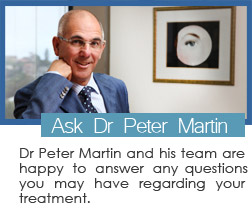
Is Iridology effective? The speculation behind the practice with Dr Peter Martin
They say your eyes are a window to your soul, but are they also an effective way for diagnosing your past and future health conditions?
What is Iridology?
Iridology is a naturopathic diagnosis method which speculates the theory that the iris contains nerve fibres connecting through cranial nerves to different parts of the body. The following article with Ophthalmologist, Dr Peter Martin from Harley Place Day Surgery in Bondi Junction, discusses the speculation, the history, and the facts about whether or not Iridology is a successful diagnosis tool for health conditions.
Iridologists believe that characteristics in the iris such as patterns and colours can be examined to determine the patient’s health. Matching their observations to the iris charts used for their practice, they believe they can pinpoint the parts of the body that may be troubled.
After gathering information from the different observations, Iridologists believe that they can prove the patient’s vulnerability towards current medical problems, potential illnesses and even explain previous medical conditions that the patient may have suffered from. As iridology is only used to loosely diagnose, it’s common for the practitioners to be versed in other naturopathic treatments to solve the diagnosed issues.
Where did the study of Iridology originate?
The concept of Iridology has been around for centuries; originally documented in 1670 by German physician Philippus Meyens. Meyens categorised the iris in accordance to body organs, but the true founder of modern Iridology was a Hungarian physician named Dr Ignatz Von Peczley.
It was in his book published in 1881, that he built the first ‘accurate’ iris chart, but he was limited by the technology available in the era and in 1950, Dr Bernard Jensen succeeded his charts with more ‘accurate’ depictions detailing the iris. These charts are still used in Iridology today.
So… Does it work?
Because the practice is full of variations from one practitioner to the next, the answer to that question is difficult to decipher.
In Joshua Mather Sr’s account, “Confessions of a Former Iridologist” he claims that after eliminating a handful of external variables that seemed to affect his work, he found that very few changes in the iris were observed; even for those patients who had significant health changes from visit to visit. He even found that the results according to the iris charts were quite contradictory to the literal conditions of the patients.
Ultimately though, as Iridology is so far not supported by any published studies; it has become considered by other health professionals to be a practice which is presented as scientific, but lacks reliable supporting evidence.
A review of published reports on Iridology was conducted in 2000 by Dr Edzard Ernst which surfaced a few troubling questions from his conclusion. Dr Ernst found that there was a possibility that Iridology could actually have been doing more harm than good:
False positive diagnosis – could lead to treatment of conditions that do not exist, resulting in expensive treatment coupled with the chance of harmful treatment for non-existent conditions.
False negative diagnosis – the patient may go to receive a diagnosis about a problem and be told that no problem exists. However in actual fact the patient may have a serious condition but trusted the advice of the Iridologist and missed the opportunity for early diagnosis and treatment by a doctor or specialist.
Furthermore, the Royal Australian and New Zealand College of Ophthalmologists (RANZCO) officially says that they do not recognise the treatment as a science or a diagnostic tool, which is a statement seconded by the majority of the Ophthalmologist community.
With modern medicine progressions and technological advancements, where do we stand with Iridology?
It’s safe to say that most have an opinion on Iridology whether for or against, but you can bet that as technology advances the lines between fact and fiction will become clearer. The chance of early condition detection, accurate diagnosis and proper treatment is significantly higher with an accredited doctor or specialist.
Dr Peter Martin offers a range of different eye care treatments that may be just the diagnosis you are after if you’re suffering from sight and eye related ailments. If you have been experiencing any unusual conditions with your eyes, we suggest you book a consultation with us today. To find out more about the conditions, simply follow through to the links provided:
Cataracts – cloudy area over the lens of the eye
Glaucoma – damage to the optic nerve
Pterygium – a small growth on the surface of the eye
Strabismus – where both eyes are not in perfect alignment
Eye lid problems – droopy or abnormal eyelid
The above are only just a handful of the treatments Dr Martin can offer you, to find out more about our treatments, do not hesitate to contact us on 9369 1608.
It is always advised to seek a professional opinion and when it comes to ophthalmology, your body and your personal eye care and here with Dr Peter Martin at Harley Place Day Surgery in Bondi Junction, we have all the professional care, advice and treatment for any and all of your eye care needs.



